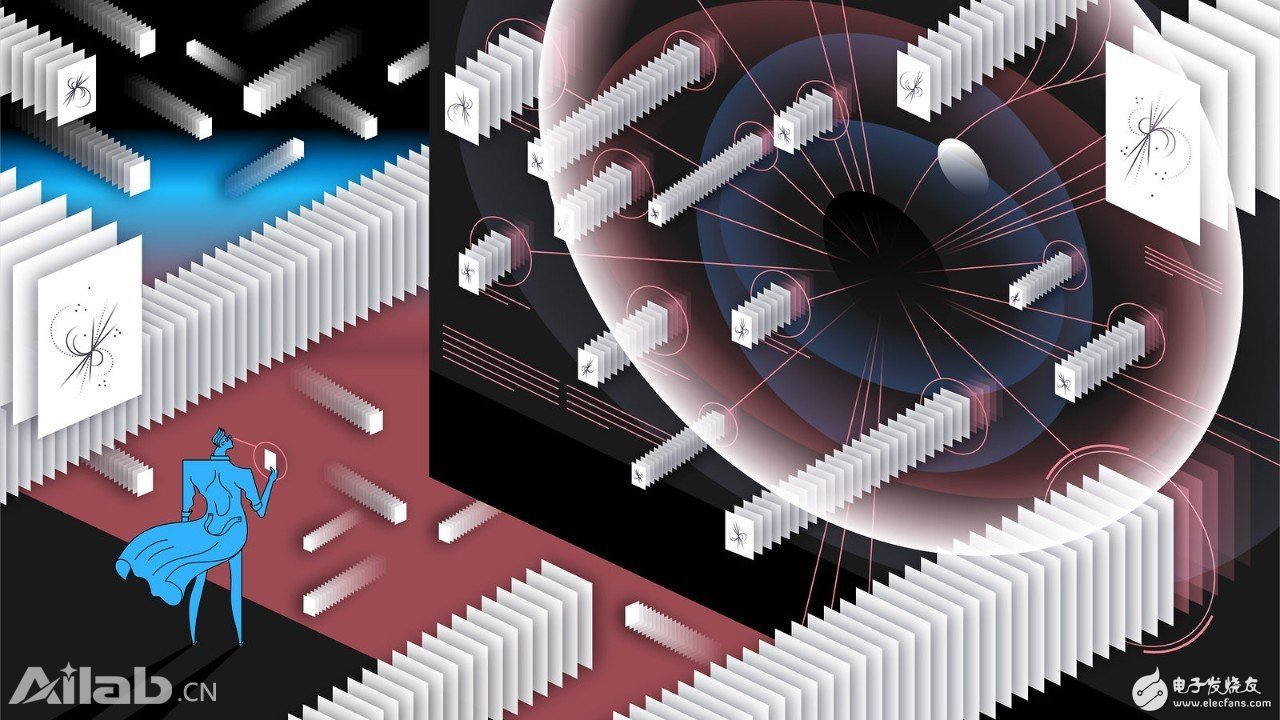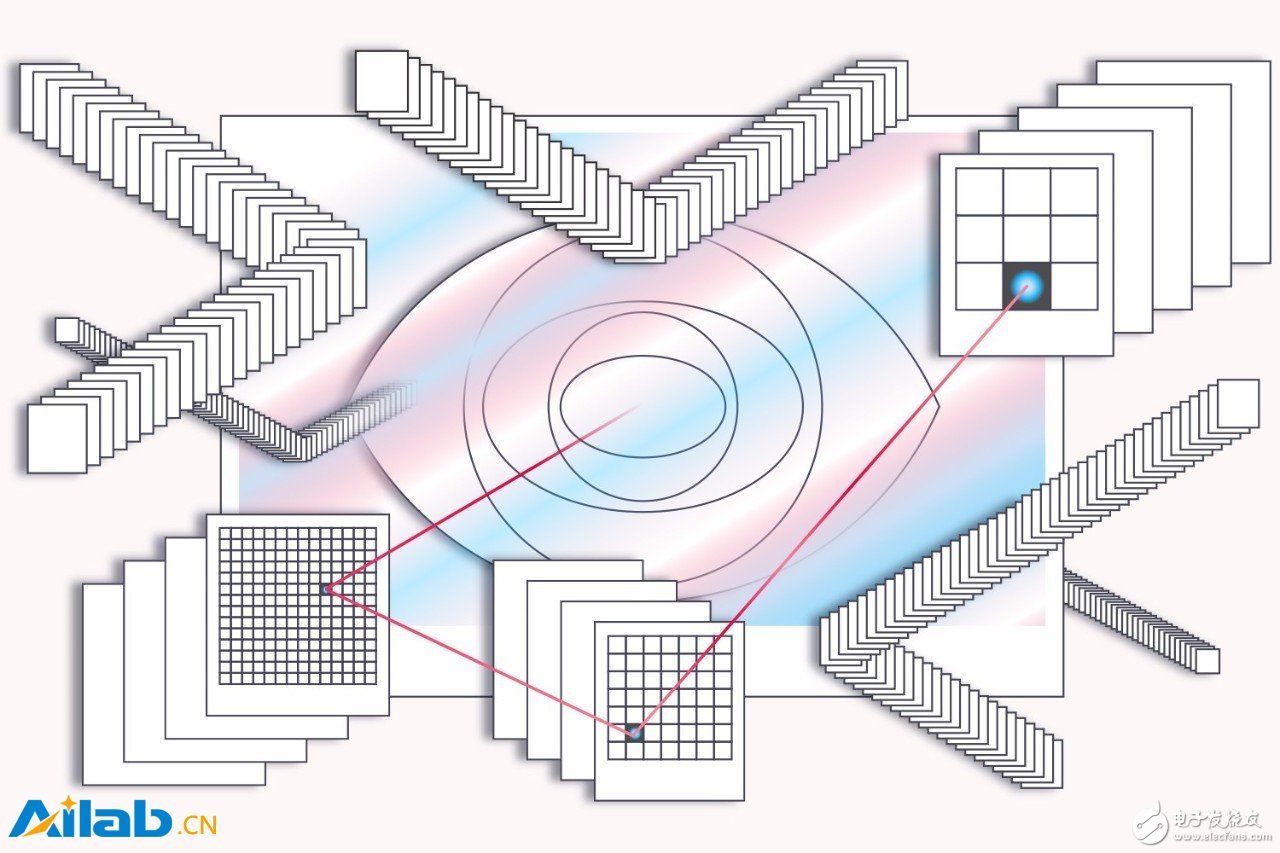When you upload a photo of your friend to Facebook, this photo goes into a complicated process behind the scenes. The algorithm quickly moves and analyzes every pixel of the photo until the friend's name matches the photo. This type of cutting-edge technology is also used in self-driving cars, enabling autonomous vehicles to distinguish pedestrians and other vehicles from the background.
Can this technique also be used to distinguish between muons and electrons? Many physicists believe this. Researchers in the field are working on it to analyze particle physics data.
Supporters hope to use deep learning to save experimental time, money, and manpower so that physicists can do other less tedious tasks. Others hope to improve the results of the experiment. This algorithm enables them to better identify particles and analyze data than any previously used algorithm. Although physicists do not believe that deep learning is omnipotent, some believe it may play a key role in dealing with the upcoming data processing crisis.

Neural Networks
To this day, computer scientists often write algorithms manually. A task often requires hours of complex computer language work. "We are still doing good scientific work," said Gabe Perdue, a scientist at the Fermi National Accelerator Laboratory. "But I think science can do better."
And if you want to use deep learning, we need a different kind of human input.
One way to achieve deep learning is to use a convolutional neural network (CNN). CNN simulates human visual perception modeling. Humans process images with their own neural network; CNN processes images by inputting layer nodes. People train CNN by sending preprocessed images to the network. By learning these inputs, the algorithm constantly adjusts the weight of each node and therefore learns to identify patterns and related points. As the algorithm constantly corrects these weights, the predictions will become more accurate, even beyond humans.
Convolutional neural networks shorten the steps of decomposing data processing by tying multiple weights together, which means fewer algorithmic elements must be adjusted.
CNN appeared in the late 1990s. However, in recent years, with many breakthroughs (such as lower hardware prices for processing graphics, continuous expansion of training data sets, and innovations in the CNN architecture itself), more and more researchers are beginning to use them.
The development of CNN has led to advances in speech recognition, translation, and other tasks traditionally accomplished by humans. DeepMind, an London-based company owned by Alphabet, used CNN to create AlphaGo, a computer program that beat the world's second-ranked Go player in March. Go is a more complex strategy board game than chess.
CNN allows us to handle a large amount of image-based data more easily, and we had no idea about these data before - such image data is often encountered in high-energy physics.
Into the field of physics
With the advent of big data and graphics processing units (GPUs) with the computing power necessary to process large amounts of information, CNN began to be used on a large scale in 2006. Perdue said: "Since then, the accuracy has greatly improved and people have continued to innovate at high speed."
About a year ago, researchers in various types of high-energy physics experiments began to consider the possibility of introducing CNN into their experiments. “We turned the physics question into: 'Can we tell a bike and a car?'†said Michael Kagan, researcher at SLAC National Accelerator Laboratory. “We just want to figure out how to restructure the problem in the right way.â€
In most cases, CNN will be used for particle recognition and classification as well as particle trajectory reconstruction. Some experiments have used CNN to analyze particle interactions with high accuracy. For example, researchers at the NOvA neutrino experiment have applied CNN to their data.
"CNN was originally a picture used to identify animals and people, but it can also be well used for identification in the physical field," says Fermi Lab scientist Alex Himmel. "The predictions are very good - it's equivalent to our detectors." Generated 30% more data."
In the Large Hadron Collider (LHC / Large Hadron Collider) experiment scientists hoping to learn the depth of their experiments more automated, CERN physicist Maurizio Pierini said:. "We're trying to replace people on some of the tasks the employer Looking at tubes is much more expensive than looking at them with computers."
In addition to detector physics, CNN has also proved useful. In astrophysics, some scientists are developing CNNs that can discover new gravitational lenses; gravitational lenses are large bodies (such as galaxy clusters) that can distort light from distant galaxies behind them. The process of scanning the telescope data to find gravitational lens distortion is time consuming and it is difficult for ordinary pattern recognition programs to distinguish their features.
"It's fair to say that when we used these tools, we only covered a very shallow part," said Alex Radovic, a postdoctoral researcher at William and Mary College working in the Fermi laboratory's NOvA experimental project.

Future data feast
Some scientists believe that neural networks can help meet the upcoming data processing crisis they foresee.
The upgraded Large Hadron Collider, scheduled for launch in 2025, will generate approximately 10 times more data. Dark energy spectrometer (Dark Energy Spectroscopic Instrument) will collect approximately 35 million data objects of the universe, Large Synoptic Survey Telescope (Large SynopTIc Survey Telescope) will capture high-resolution video nearly 40 billion galaxies.
The amount of data will certainly grow at a rapid rate, but the exponential growth in the processing power of the former computer chip is expected to come to a standstill. This means that processing larger amounts of data will become more and more expensive.
"For 10 times the number of collisions, you may need more than 100 times the processing capacity," Pierini said. "Using traditional ways of doing things, we will walk into dead ends."
However, not all experiments apply to this technique.
"I think sometimes this will be the right tool, but it won't always be right," said Himmel. "The less similar the data is to natural images, the less useful the neural network is."
Most physicists agree that CNN is not suitable for data analysis in experiments that have just started because neural networks are not very transparent to the calculation process. "It would be very hard to persuade people that they have found something new," Pierini said. "I think it's still valuable to do things with paper and pen."
In some cases, the challenges of using CNN will outweigh the benefits. For example, if the data has not been converted to an image format, it needs to be converted to an image format. And neural networks require large amounts of data for training—sometimes having to simulate millions of images. Even so, the simulation is not as good as the real data. Therefore, neural networks must be tested with actual data and other cross-checks.
"A high-standard physicist can accept anything new," said Amir Farbin, associate professor of physics at the University of Texas at Arlington. "There are a lot of obstacles that need to be overcome to convince everyone that this is right."
Looking to the future
For those who believe CNN results, CNN means faster physics and unknown expectations.
Some people want to use neural networks to detect abnormalities in the data, which can indicate defects in the detector or guide clues for new discoveries. To find new discoveries, researchers can just let CNN traverse the data and try to find the highlights instead of having to find new things with specific signs. "It is not necessary to specify new physical areas to search for," Pierini said. "The way to get data here is more open."
In the future, researchers may even begin using unsupervised learning to process physical data. Unsupervised learning, as the name implies, refers to an algorithm that can train large amounts of data without the need for manual instruction. Scientists can transmit the corresponding data to the algorithm, and then the algorithm can draw conclusions from it.
"If you are smart enough, you can use it for all kinds of things," Perdue said. "If it can infer new laws of nature or similar laws, it would be amazing."
"But," he added, "In that case, I will also look for a new job."
Elfworld BDE6000 VAPE disposable VAPE consists of mesh coil with Type-C charging port. Elfworld DE6000 VAPE gives you about 6000 puffs and delivers the purest flavor. Elfworld DE6000 vape mod contains 13.5ml e-liquid, 0/2/3/5. %NIC salt and 15 flavors you hold it you will love it!
☑0/2/3/5%NIC salt.
☑13.5ml of e-liquid
☑Mesh coil
☑15 flavors available.
☑ Recharging
☑type-c charging
☑550mAh battery
☑10pcs in a display box
☑300pcs in a box
☑Dimension size: 505*250*300mm
☑Carantton weight: 19kg.
Taste:
1. Apple Peach
2. Razz Ice
3. Razz BLUE Lemonade
4. Blue Ice
5. Cotton Candy
6. Energy
7. Filtered
8. Juicy Peach
9. Kiwi Passion Fruit Guava
10.Pineapple Mango Orange
11. Strawberry Banana
12. . Strawberry Ice
13. Strawberry Ice Cream
14. Vanilla Ice Cream
15. Watermelon Ice
Elfworld DE6000,Elfworld 6000puffs Vape,Factory price Elfworld DE6000puffs
Shenzhen Kester Technology Co., Ltd , https://www.kesterpuff.com